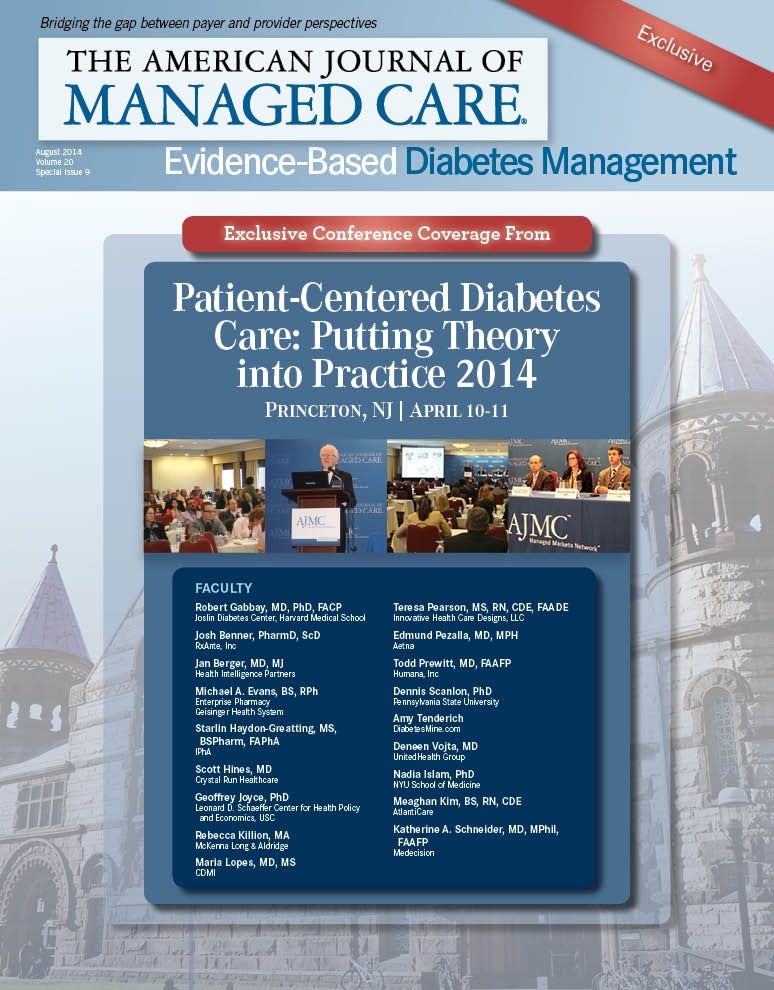- Center on Health Equity & Access
- Clinical
- Health Care Cost
- Health Care Delivery
- Insurance
- Policy
- Technology
- Value-Based Care
Incentives and Tools as Keys to Improving Medication Adherence
Dr Benner presented a program that helps providers improve medication adherence among their patients.
The problem of getting patients to stick with their medication regimens is both a huge driver of healthcare costs and a land of opportunity for those who seek ways to bring those costs under control. Josh Benner, PharmD, ScD, outlined a program designed to tackle this well-documented challenge, which is offered by the company he founded, RxAnte.
Benner, now a visiting scholar at the Brookings Institution as well as Rx-Ante’s president, began his talk, “Improving Adherence in Diabetes and Chronic Disease,” with numbers on the staggering cost of poor adherence: the nation spends $325 billion annually on prescription drugs, followed by another $300 billion on the results of misuse or poor adherence. “So, for every dollar we spend on prescription drugs in this country,” Benner said, “we spend another dollar on the consequences of their misuse.”
Since the reasons for poor adherence have been well documented, Benner dove right into his discussion points on the challenge of fixing it. Driving up adherence rates will be crucial to healthcare providers, he said, because Medicare now rates them on how well they do, and CMS has started paying bonuses to its highest rated providers. With adherence now accounting for 3 weighted factors (including adherence to diabetes drugs) in Medicare ratings, early results show that paying providers to work harder to get patients to stick with medication is successful. “Incentives are here to stay,” Benner said.
Providers, then, need analytic tools to help predict which patients are at risk for not taking medication, so they can intervene. “There is nothing more effective than getting people’s own doctors, own pharmacists, own nurses, the people they trust for healthcare information, to help manage their medication use better,” Benner said. The problem, until now, has been transferring the results of small pilot studies to serve large populations.
He cited 2 recent papers appearing in the Journal of the American Medical Association and the New England Journal of Medicine that condense intervention down to 3 steps:
• Adherence must be the provider’s job. They have to be paid to address medication use.
• The list of at-risk patients must be focused. Doctors need up-to-date information on not only patients who have not taken medication in the past, but also those who present new risks for poor adherence.
• Providers need tools.
That’s where companies like RxAnte play an essential role, identifying those in the population who are at risk. Once identified, they can be the target of concerted efforts. For example, identifying patients who haven’t picked up a prescription after 14 days allows providers to create a list of who must be contacted by phone.
It’s essential that these efforts be focused, because doctors, especially primary care physicians, have no time to spare.
RxAnte’s pilot program, in place from July to December 2013, targeted 29,000 Medicare Advantage patients across 1300 practices in one health plan who were identified as at risk for poor adherence. These patients, Benner said, could “make or break” the plan’s Medicare ratings for the year. RxAnte hoped to get about 130 of the practices to participate in the pilot; instead, interest was so strong that 570 signed on in 6 weeks. Some practices participated through a Web-based portal, while others used faxes and other more traditional communication methods.
Results categorized by therapy showed the greatest improvement in getting patients to stick with statins. The most engaged practices, which used the Web portal, improved statin adherence rates by 3.8% and had the best results, Benner said.
EBDM
In some practices, doctors called patients themselves, while others had a nurse or community health worker perform this task. Flexibility is key, Benner stressed. “We learned that these practices will use a variety of approaches for engaging patients.”

Mental Health Care Use After Leaving Medicare Advantage for Traditional Medicare
December 1st 2025Medicare Advantage beneficiaries with mental health diagnoses see more nurse practitioners and fewer internal medicine and emergency medicine specialists after switching to traditional Medicare.
Read More

